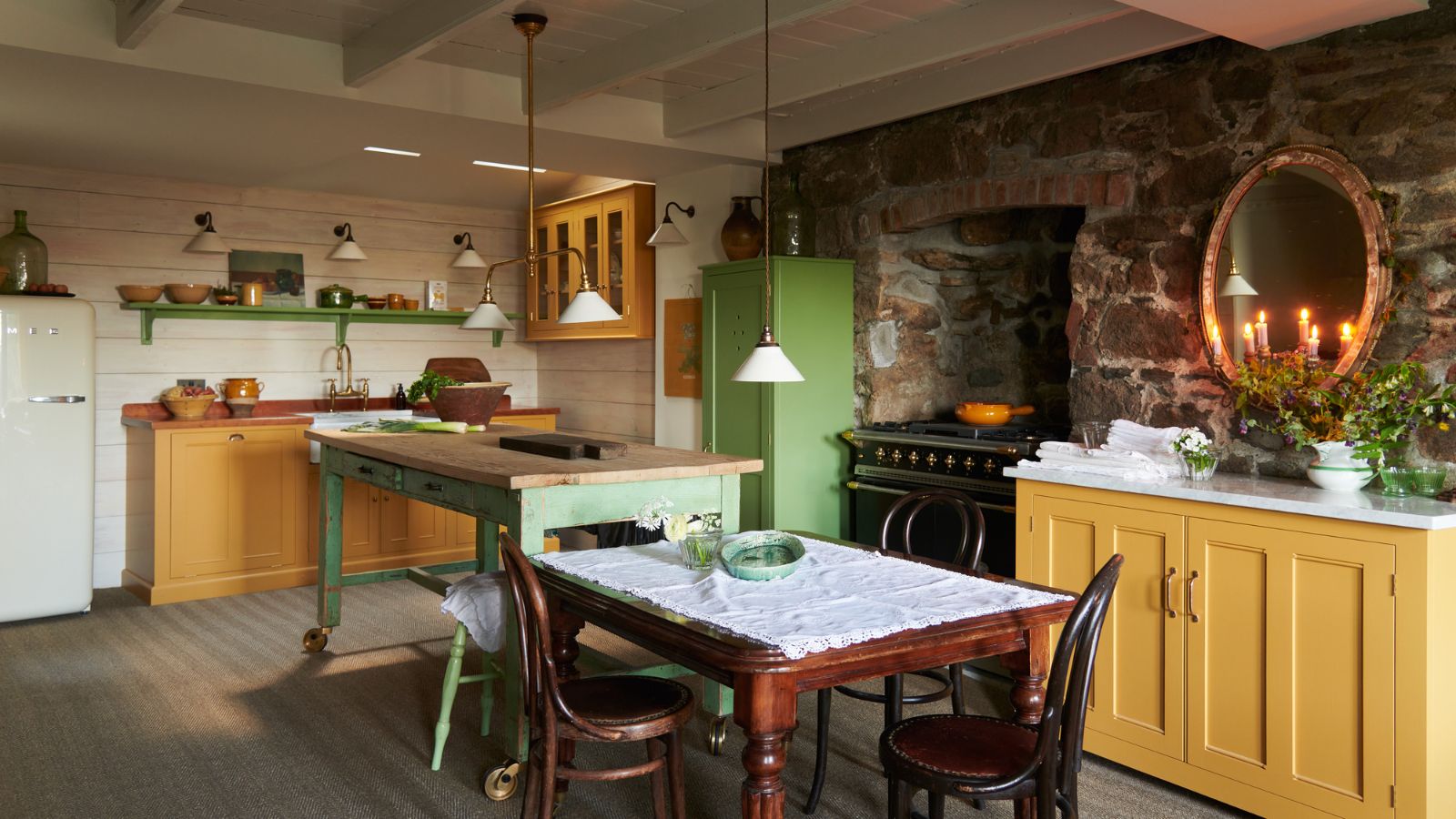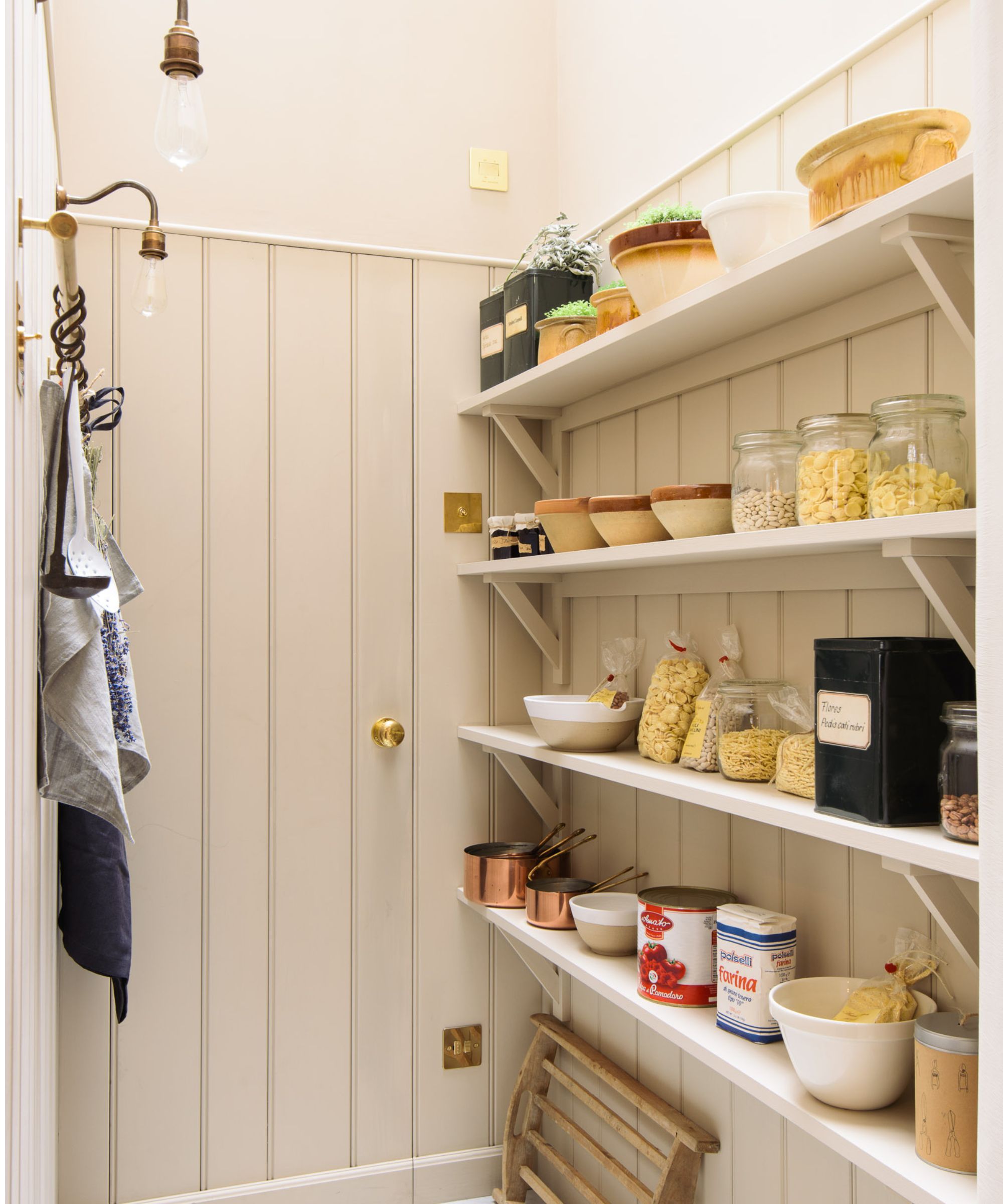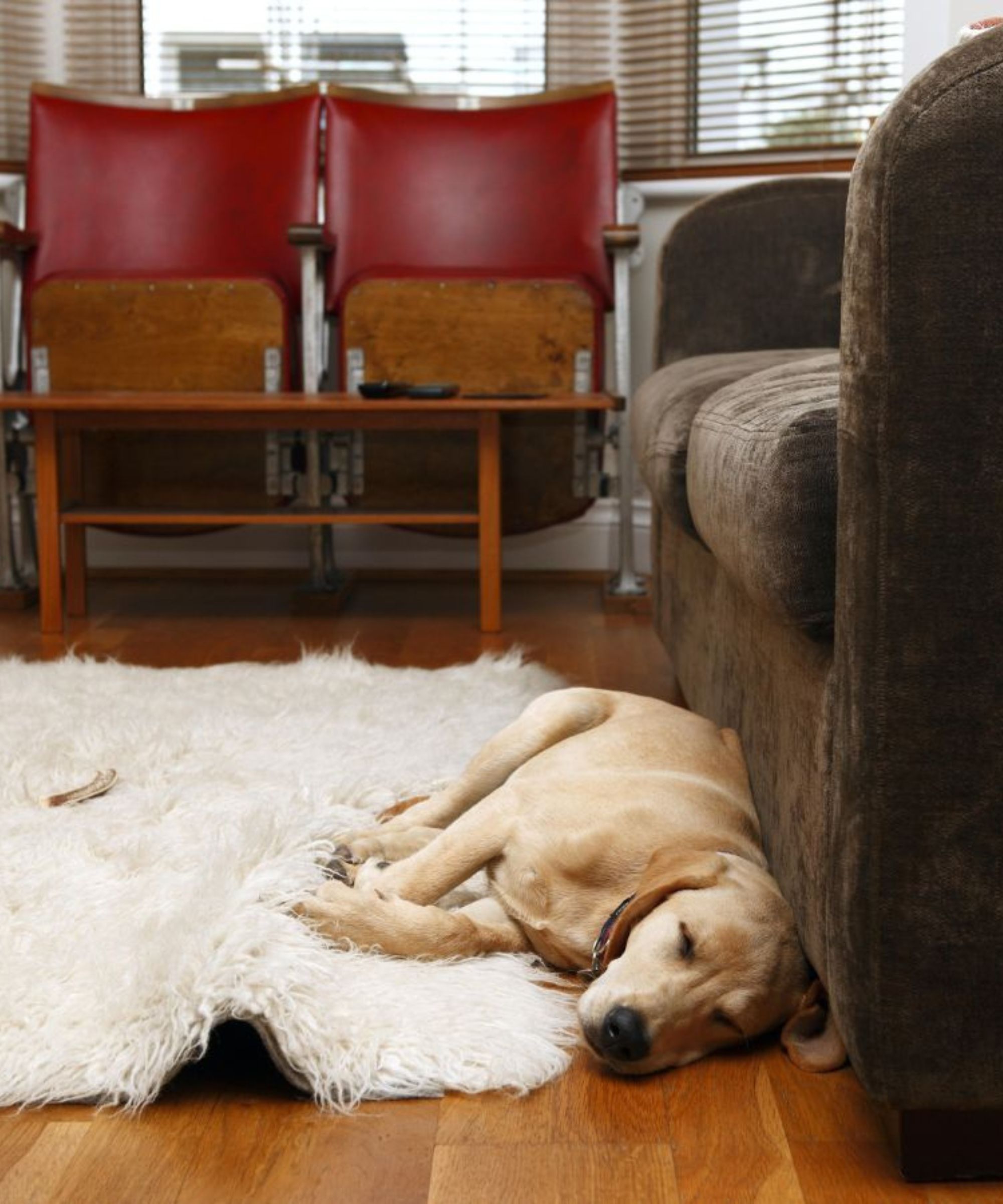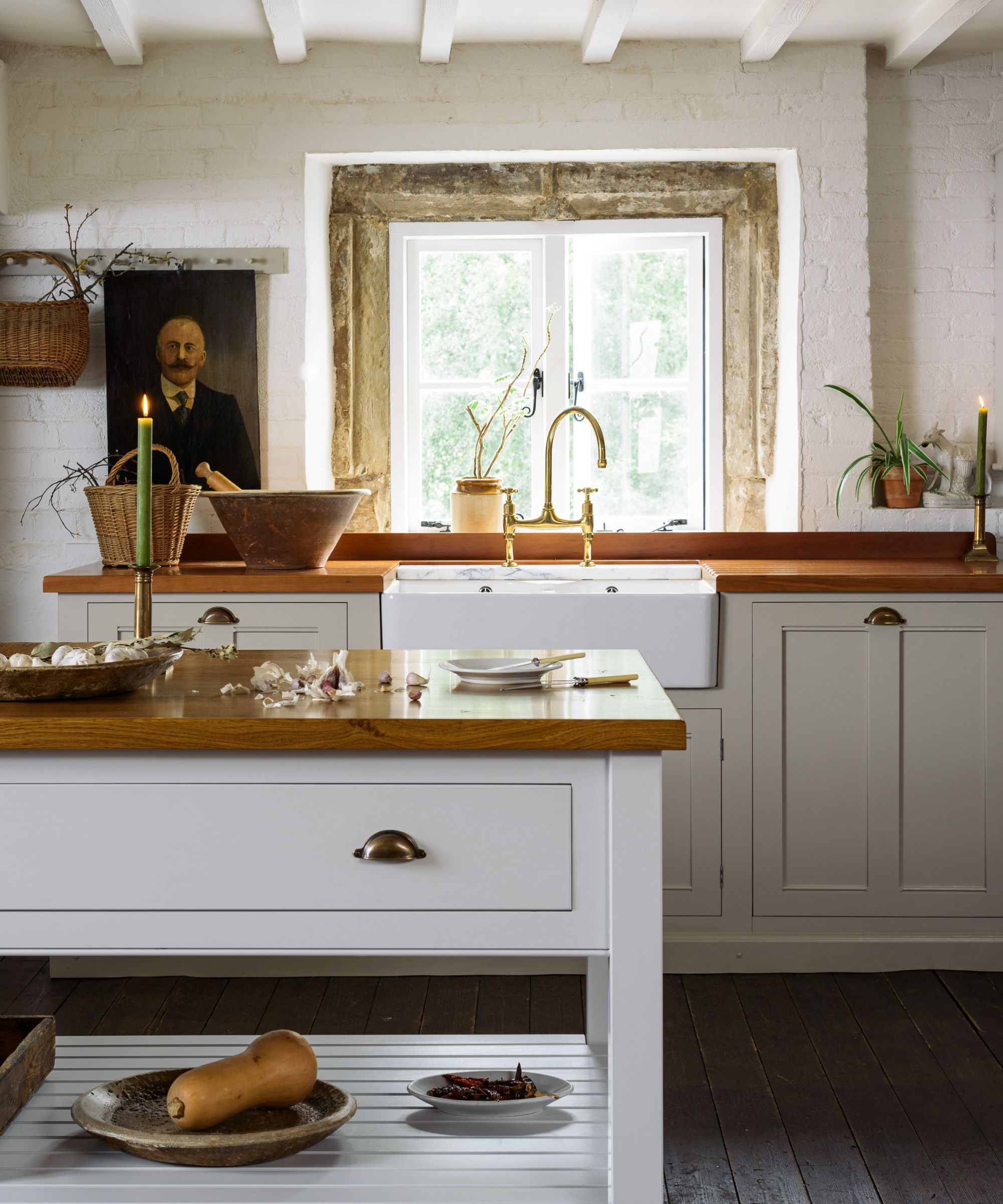
Whilst some might think doing it wrong is better than not doing it at all, cleaning your home in the wrong order can actually hinder your progress by doubling your workload unnecessarily.
Here, professional cleaners reveal the top six running order mistakes to swerve when cleaning, as these make the most mess. Using these cleaning tips will leave your home sparkling in far less time and with far less effort.
Are you cleaning in the wrong order? Avoid these 6 mistakes
1. Mopping your hard floors before wiping down counters

A core mistake when cleaning in the wrong order is tackling floors before surfaces. You'll only be making the floor dirty again when you turn your attention to cleaning your counters. Instead, learn how to mop floors the right way and do this step last.
Karina Toner, professional cleaner and operations manager at Spekless, says, 'Sure, that floor might look satisfying when it’s freshly mopped, but try not to get ahead of yourself.
'As soon as you start wiping down countertops, scraping up crumbs, brushing away coffee grounds, or cleaning sticky spots, all that debris will rain down onto the floor. For this reason, it's important to find the right cleaning balance in your home and clean high to low so you’re catching everything that falls, not just chasing it around.'
If you're in a rush and really want to tackle cleaning your flooring first, give your counters a once-over with something like the Clorox Disinfecting Wipes from Target to prevent dirt from spreading.
2. Dusting the top of your furniture last

Whether it's a small bathroom medicine cabinet, the top of a wardrobe or your kitchen cabinets, dusting the top of your furniture last is a definite cleaning and dusting mistake, and a sign that you are cleaning in the wrong order.
It's a recipe for a dust storm, and you don't want flecks floating down onto other newly dusted surfaces.
'Cleaning your floors and wiping down counters before addressing the top of your cabinets, furniture, and ceiling fans guarantees that dust and debris will fall and settle onto your freshly cleaned surfaces,' says Muffetta Krueger, professional cleaner and owner of Muffetta's Housekeeping. 'Always start at the top of the room (shelves, furniture, fixtures) and work your way down to the floors as the final step.'
Jon Riding, owner of Evergreen Cleaning Company, echoes this, saying, 'Ceiling fans collect way more dust than people realize. If you clean the whole room first, then wipe the fan blades, you’ll just end up with dust falling onto your clean floors and furniture. It’s one of those things that should always be done first before you touch anything else in the room.'
A nifty hack to help you prevent dust for a consistently clean space is to take a photo on your phone using flash mode and a stick like the SelfieShow Extendable Stick Tripod on Amazon. This way, you'll have a clear indication of how much dust and debris is up there before or after you attempt to clean.
3. Cleaning pet areas after vacuuming surrounding floors

A similar mistake occurs when pet areas are cleaned up after vacuuming up the surrounding floors. If you have just finished cleaning pet hair from wooden floors or getting dog hair out of carpet, and you then move around your pet's bedding and food station, debris and fluff will make its way onto the floor again, undoing the cleaning you just did.
'The smart move is to declutter and clean pet areas first (shake out beds, wipe down toy baskets) then vacuum after to grab every last shed hair in one clean sweep,' says Karina.
If you have shedding pets, go over any nearby furnishings, including their bedding, with a lint roller like the Mainstays Lint Roller from Walmart after shaking furnishings outside.
Doing this will remove pet hair from fabric, laundry and clothes, and prevent dust and fur from contaminating your home's air and flooring.
4. Using the same cloth on different surfaces

If the order of cleaning and using your cloths isn't considered, you'll be spreading germs around instead of banishing them. It's important to rotate and replace your cloths during cleaning to keep everything as sanitary as possible, and to consider what essential cleaning tools have been used to clean which surfaces.
'Grabbing the same microfiber cloth to clean the bathroom counter after wiping the toilet seat is a surefire way to spread bacteria,' says Muffetta. 'Always work in a sanitary sequence – from the cleanest areas to the dirtiest – and switch cloths or rinse thoroughly between surfaces.'
Adding a pack of multiple cloths such as the MR.SIGA Microfiber Cleaning Cloth Pack of 12 available at Walmart to your ultimate cleaning supplies checklist is a great way to stay well stocked to tackle the hardest household cleaning tasks in the most hygienic way.
It's recommended to wash your microfiber cleaning cloths on their own either by hand or on a delicate cycle with a fragrance-free detergent. Avoid any fabric softener as this will reduce the microfiber's ability to absorb water.
5. Disinfecting surfaces before removing surface dirt

If a surface is disinfected before debris is removed, the surface won't be properly disinfected. This is because grime and dirt already on your surface will be wiped around the area instead of being removed, smudging across your surface and countering the thoroughness of your disinfectant's cleaning capabilities.
'Spraying disinfectant on a visibly dusty or grimy surface without wiping up the loose dirt first makes the disinfectant less effective, and leaves a hotspot for germs,' says Muffetta. 'The dirt creates a barrier that prevents disinfectant from reaching germs properly. Always dust or wash surfaces first, then disinfect.'
When I clean debris off of my counters or tables I bring the bin over to sweep the pieces directly into. This way, only what misses the bin will end up on the floor and that will be covered by my vacuum at the end.
6. Emptying your vacuum before putting it away

After a thorough cleaning session, we may wish to empty our vacuum cleaner before putting it away. But doing this indoors is a major mistake, and will invite a plume of dust and bacteria right back into your home.
'One thing people don’t realize is how much fine dust escapes when you empty a vacuum canister,' says Jon. 'If you do this after cleaning, that dust floats back into the air and settles on your clean surfaces.'
For this reason, as Jon says, 'It’s always better to empty your vacuum outside or before you start cleaning the rest of the house,' if you don't own a self-emptying vacuum.
Cleaning essentials

Clean your home's hard-to-reach areas with ease using an extendable duster tool like this microfiber one from Sugarday.

Wearing gloves while cleaning will ensure you're not touching dirty surfaces with your hands, or creating fingerprints.

This caddy is perfect for carrying your cleaning supplies as you travel from room to room.
Meet the experts
If you're looking to up your cleaning game minus the addition of extra harsh chemicals in your home, check out our ultimate guide to non-toxic cleaning products. Some of them you can even make at home using staples likely tucked away in your pantry.







